Today, May 20, is National Rescue Dog Day. Here at Highland Canine, rescue dogs are close to our hearts. As part of our Second Chance Program, we have rehabilitated countless dogs from local shelters at no cost, training them to ensure they are adoptable.
It is an unfortunate reality that so many dogs are surrendered to animal shelters across the United States – indeed, every year, approximately 6.5 million animals enter shelters, with dogs comprising half of that number.
There may be a perception in some quarters that rescue dogs are somehow less fashionable or desirable than their counterparts who are purchased directly from a breeder. This isn’t to spark the classic ‘adopt or shop’ debate – both adopting and purchasing a dog have their place! But with the abundance of dogs in shelters, it is worth noting that these dogs do not usually end up there because of unruly or dangerous behavior. Frequently, dogs are surrendered because their owner’s circumstances have changed. For example, the owner may have moved to a new state, moved to a rented apartment which doesn’t accept pets, or may have suffered a debilitating injury or even passed away.
With this in mind, we should remember that just because a dog is in a shelter, it doesn’t automatically mean it has ‘problems’ or that the previous owner was irresponsible. If you are thinking of adopting a dog from a shelter, there are also questions you can ask before bringing a pup home. We also have some tips for preparing your home for your new arrival.
To mark National Rescue Dog Day, we recently spoke to three rescue dog owners and asked them to share their stories of rescue dog ownership.
"This is one of the most fulfilling things I have ever done"
Originally from Australia, Andrea Portbury now lives in North Carolina and is extremely active in the rescue community. In addition to owning five rescue dogs, Andrea has volunteered at rescues, and now works with a grass-roots organization, Every Snout Counts.

What is the name of your rescue dog(s)?
Theo, Layla, Spider, Celie and Jaeger. Theo, Layla, Celie and Jaeger are German Shepherds; Spider is a pitbull.
When did you adopt them, and where did you adopt them from?
All the GSDs came through German Shepherd Rescue and Adoptions. Prior to that though, they came from various shelters:
Theo: Wake Co. Animal Control
Layla: Lenoir Co. SPCA
Celie: Tri-County Animal Shelter
Jaeger: Rockingham Co. Animal Shelter
Spider was a stray in some woods behind my house that I convinced to come live with me!
What information did you know about your dog's backstory when you adopted them?
Theo was a ten year old owner surrender. He had numerous medical issues: severe ear infections, skin infections, eye infections, arthritis, heartworms. He was anxious at the shelter but wanted human contact.
Layla, Celie and Jaeger were all strays that had been picked up or trapped by Animal Control. Layla was incredibly sick but so, so sweet. We were told to either pull her or they would euthanize. Celie and Jaeger were both described as feral. Their only chance of survival was rescue. Both were described as “untouchable” but not at all aggressive.

In general, how have you found their behavior? Did they settle into your home fairly quickly?
That’s a hard question to answer. Each dog had a multitude of behavior and health problems when they got to us. However, my husband and I allow our animals to go at their own pace and do their own thing (barring aggressive behavior, which none of these dogs had), so I think each one of them felt relatively safe within a week.
Layla was the easiest to form a relationship with. She was clearly looking for a human to attach to and her and my husband formed an almost immediate bond. Theo was very independent – it took around 4 months for him to find comfort in our presence, but probably double that amount of time to feel comforted by our touch. Celie and Jaeger are still a work in progress. We have had Celie almost 3 years and she still chooses not to be touched by us. She will however follow me around and “play” with me if I do play bows or make playful moves with her. Jaeger has been with us about 5 months and has had to be put on anti-anxiety meds. This has helped him a lot. He will now lick my hand and wag his tail at me but still does not want to be touched.

Where have you volunteered? Was there a spark that pushed you towards volunteering at a rescue, or is it just something you have always been passionate about?
I have always been an animal lover, however it wasn’t until moving to the US (from Australia) that I learned about animal rescue. I adopted my first GSD from German Shepherd Rescue and Adoptions and loved the idea of being able to help dogs in need. I feel fiercely protective over animals and rescue suits this character trait of mine.
Having visited many, many, many shelters during my time at GSRA, I knew I always wanted to volunteer at one, one day. When I stepped down as President of GSRA I found I had extra time and so started volunteering at a wonderful, tiny shelter in Yanceyville, NC. This is one of the most fulfilling things I have ever done. I walk the dogs, do temperament tests on them, coordinate with rescues to pull the dogs and work with the behaviorally-challenged dogs to improve their chances of being adopted or rescued.
In addition, I joined a grass-roots organization that operates in Davidson County, NC, to give out low cost rabies vaccinations, food, shelters and medicine for people who cannot afford these things for their animals. The group is called Every Snout Counts and fills in the animal welfare gaps that the overworked Animal Control can’t get to.

As someone who has worked as a rescue volunteer, what advice would you have for anyone thinking of adopting a shelter dog? What things should they think about before adopting?
Do your research on the breed that would suit your home and lifestyle the best. Don’t be swayed by all the adorable faces when you get to the shelter. Keep in mind the breeds that will work best for what you can offer. So many people let their hearts decide and then end up with a dog they can’t handle or care for. Trust me, I know, shelters are incredibly gut wrenching places. You want to save them all. But you have to be pragmatic in the short term, so that both you and your adopted dog will be happy in the long term. If you don’t think you can be like that at the shelter, go to a breed-specific rescue or look up PetFinder to find dogs of the breed that best suits you.
When you adopt from a shelter or rescue, be committed – no ifs, buts or whatevers! Commit to the dog you are choosing to adopt. If you have done your research properly (like I described previously), you should be fairly confident that the dog you have adopted will work for your home and lifestyle. Even so, that dog will need time, patience, love and more than likely training to acclimate to what might very well be the first safe and loving home it has ever been in. Commit to giving your dog all of that – and more. When you adopt a dog, you are promising it that you will make its life better. That should be a promise you keep!
If you aren’t 100% committed to seeing the dog through all the ups and downs of life together, do not put it through the trauma of coming home with you, only to be sent back to the shelter/rescue when you are frustrated with it. It won’t be easy – you are bringing a living being into your home that doesn’t speak your language and has no way of knowing if it is safe or not. Put yourself in its paws and think what it would be like to be dumped into a home in a foreign land where you don’t speak the language, don’t understand the culture, and have come from a past where abuse and neglect may have been part of your life. How long would it take you to work out you were safe and could trust your new family?
Time and understanding and using the many, many resources available (good trainers, vets, fellow rescuers) will aid in your success as an adoptive dog parent. Use these resources to give your dog the happily, furever after ending it deserves.
"Starky is an energetic, adventurous dog"
Clara Diekman now lives in Florida, but she has traveled around the United States with her rescue pup, Starky. Clara lives with three roommates, with five dogs between them – four of them are rescues.
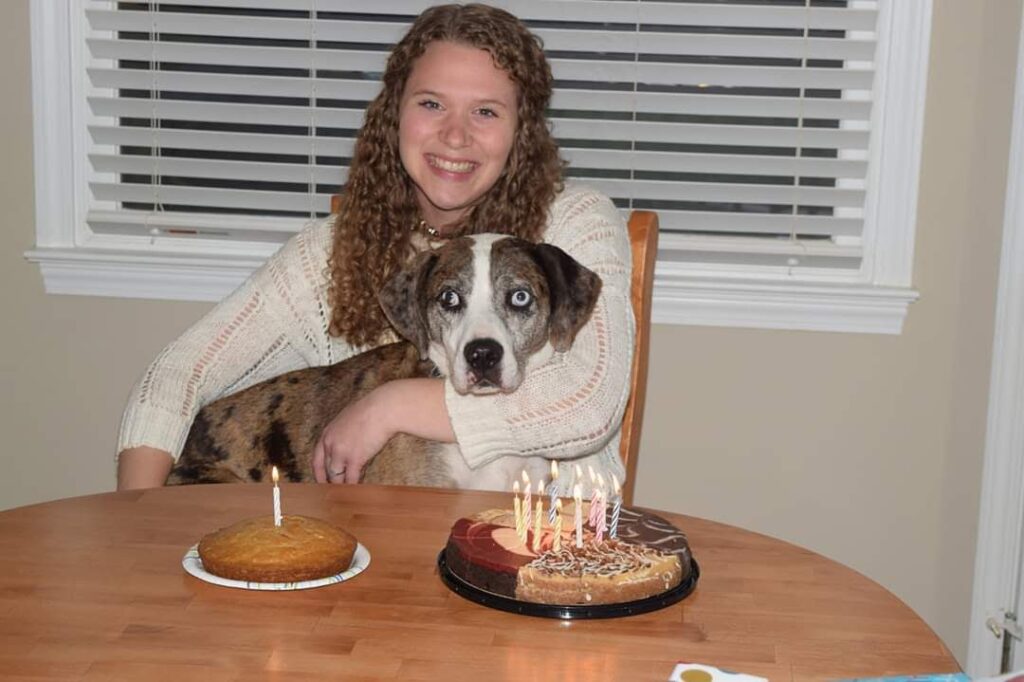
What is the name of your rescue dog?
Starky! He is named after a town near and dear to my heart, Starkville, MS. Hail State!
Starky is a Catahoula mix.
When did you adopt them, and where did you adopt them from?
I adopted Starky on June 26th 2019 from the Iredell County Animal Shelter.
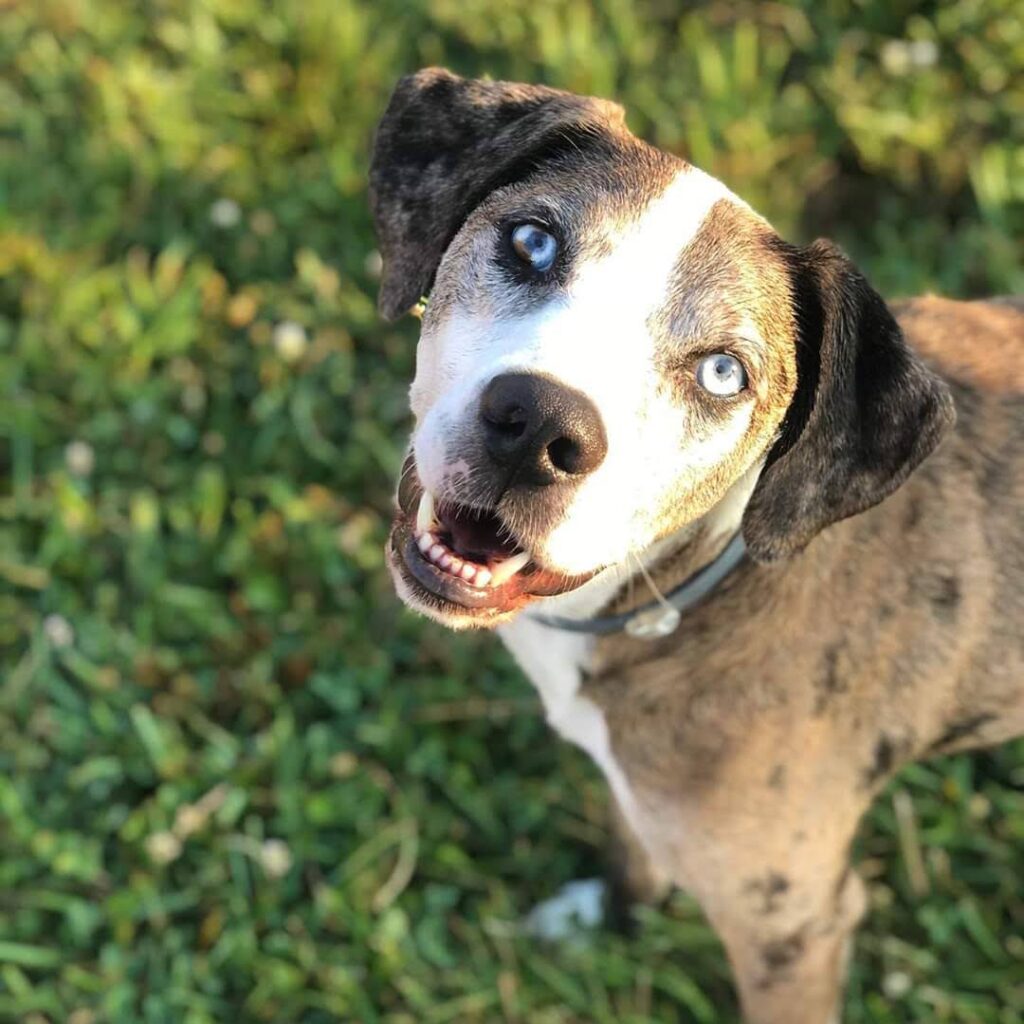
What information did you know about your dog's backstory when you adopted them?
The only thing I knew about him when I adopted Starky was that he was a stray, found lying on the side of the road in the northern part of the county.

In general, how have you found their behavior? Did they settle into your home fairly quickly?
Starky settled in very nicely with my parent’s 3-year-old black lab, Hank. It was obvious when we first brought him home that he had been around people before, but he didn’t know how to be an inside dog. He was really scared and timid of various noises and objects around the house. I think it helped to have another dog in the home during those first few weeks to show him the ropes.
Just a month after adopting him, we moved back to Starkville for my senior year at Mississippi State. This new environment shed light on some behavioral issues he had, including separation anxiety, storm phobia, and leash reactivity. While he is still afraid of storms, his leash reactivity and separation anxiety have improved tenfold.
Now, Starky is an energetic, adventurous dog who loves to lay in the sun, chase rabbits, ride in the car, and cuddle on the couch.
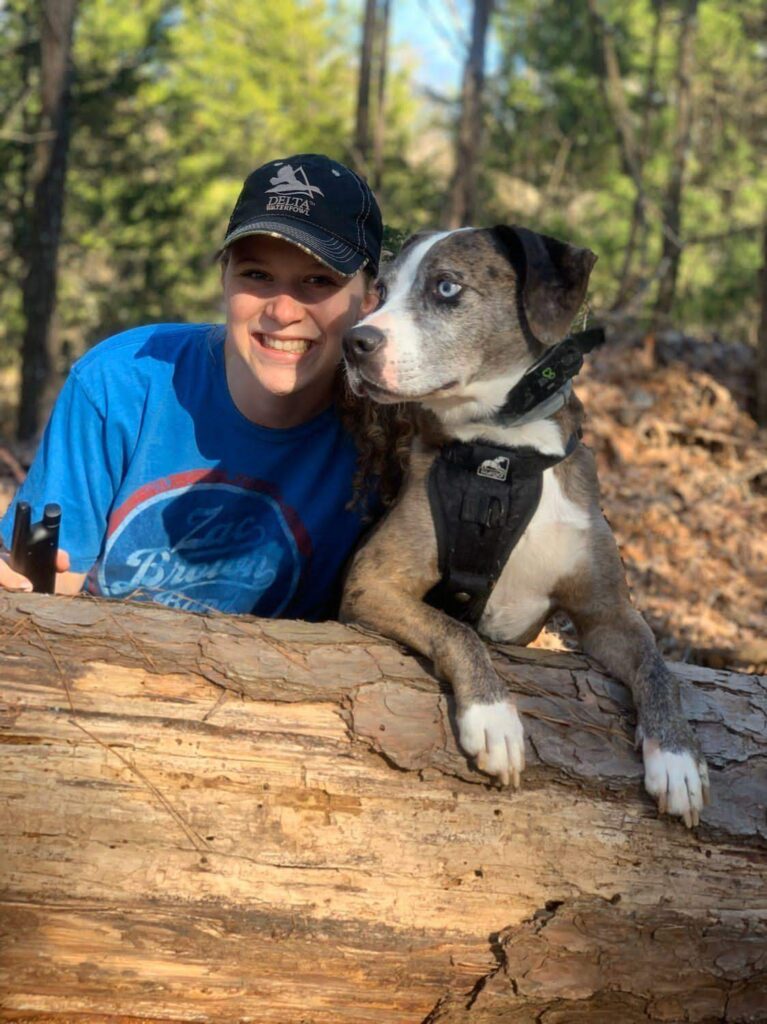
Is there anything else we should know?
- Starky has lived with me in North Carolina, Mississippi, and now Florida.
- We have the same birthday – December 20th!
- At our current house in Florida, there are five dogs in total, four of which are rescues.
- He is very vocal and will let me know when I’ve spent too much time studying and not enough time playing with him.
"We traveled 450 miles to pick her up"
Savanna Raymond spoke to us about her two rescue dogs. “I have had many rescues in my life,” says Savanna. “And everyone needs to know ‘no rescue is alike’. They are all different with how they adjust and the issues they have. In time they will come around, but it takes time, patience, stability, trust and consistency.”
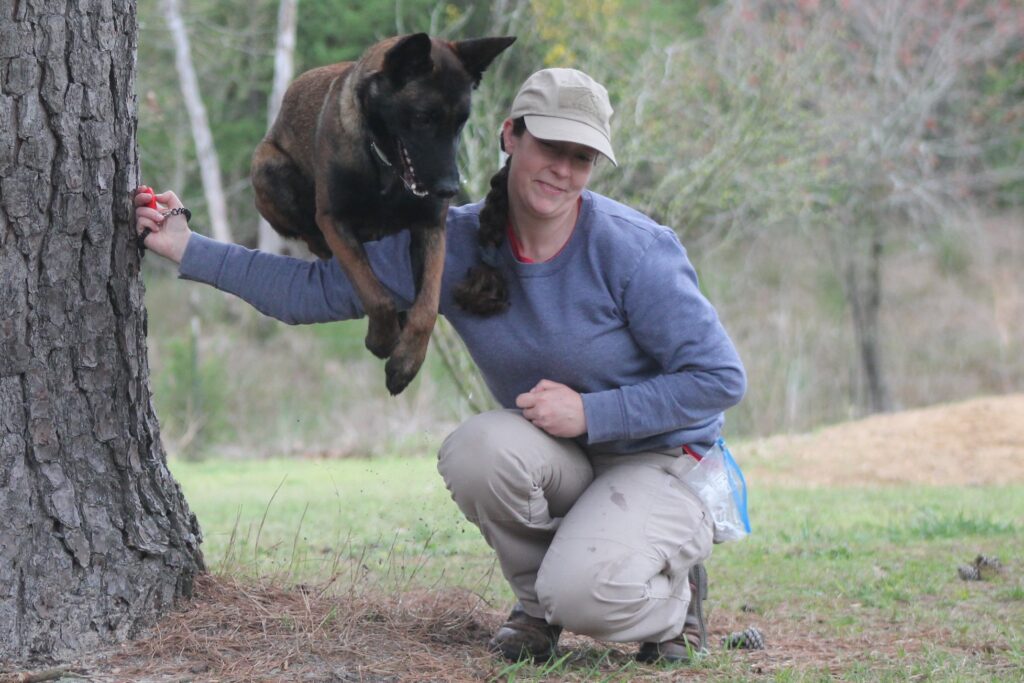
What is the name of your rescue dog(s)?
Nadia (meaning ‘hope’) and Molly. Nadia is a Belgian Malinois, and Molly is a Labrador Retriever.
When did you adopt them, and can you remember where you adopted them from?
I adopted Nadia from TLC Pet Rescue in Stockbridge, GA on November 18, 2019. Molly was adopted on December 14, 2018, actually at Highland Canine.
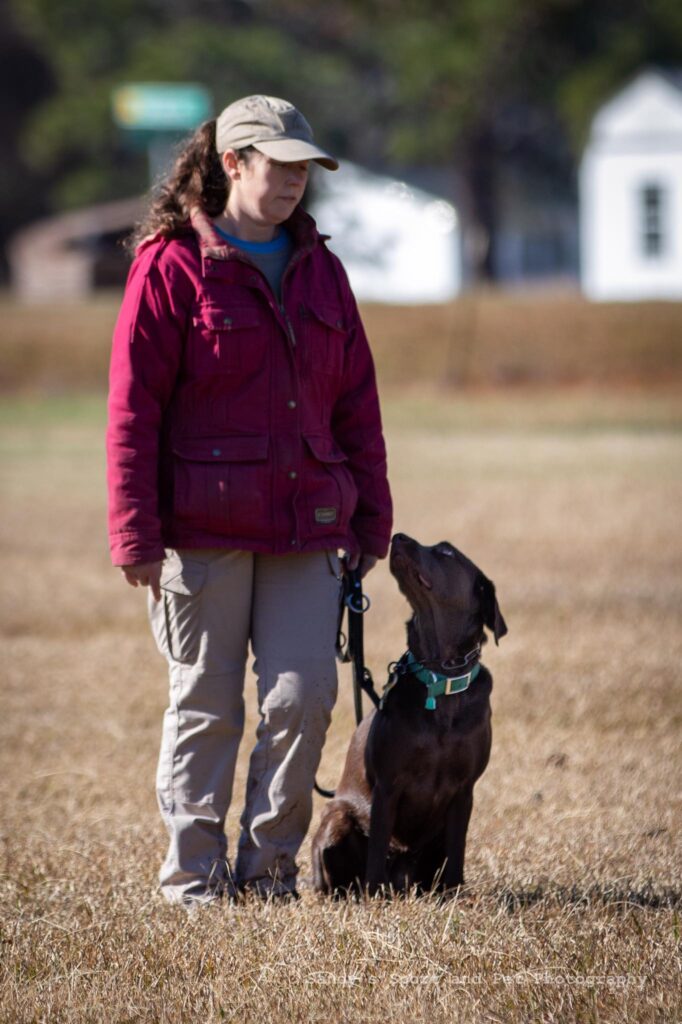
What information did you know about your dog's backstory when you adopted them?
The previous owner got Nadia as a puppy, and was going to use her as basically a puppy mill puppy maker. Animal Control picked her up on multiple occasions and gave the owner an ultimatum – to pay a fine or surrender her. The owner chose to give her up.
She had a body score of 1, and the rescue did not think she would survive the treatment she needed. She was at the veterinarian’s office for 8 weeks while receiving treatment, and after treatment, we adopted her .We traveled 450 miles to pick her up directly from the veterinarian office.
As for Molly, she was an owner surrender at 9 months to Highland Canine. She was a detection washout and a service dog washout (environmentally unstable from lack of exposure), which has improved with work, consistency, stability and trust.
In general, how have you found their behavior? Did they settle into your home fairly quickly?
With Nadia, in terms of her behavior on her initial arrival, she had no manners whatsoever, let alone any obedience. She did not know how to relax, calm/settle down, or even sleep outside of her kennel.
She is still learning to settle but at the moment she is afraid she is going to miss something (reminds me of a toddler). She has come a long way from where she was, and will continue to get better in time. She is a typical Malinois – high drive, high energy, quick learner and gets bored easily. She gets really excited to go to work and shows it when she jumps higher than my head.
Initially, Molly was a little wild. She did not know how to be calm in the house, or how to be a dog really. She had no idea what to do with a chew or a Kong. She had to learn by watching my older German Shepherds.
From experience with other rescue dogs I have had, it takes about a year for them to fully settle in. Molly has settled in nicely. She gets along with the other dogs in the household. She is a snuggle bug, but is also ready to go to work at the drop of a hat.
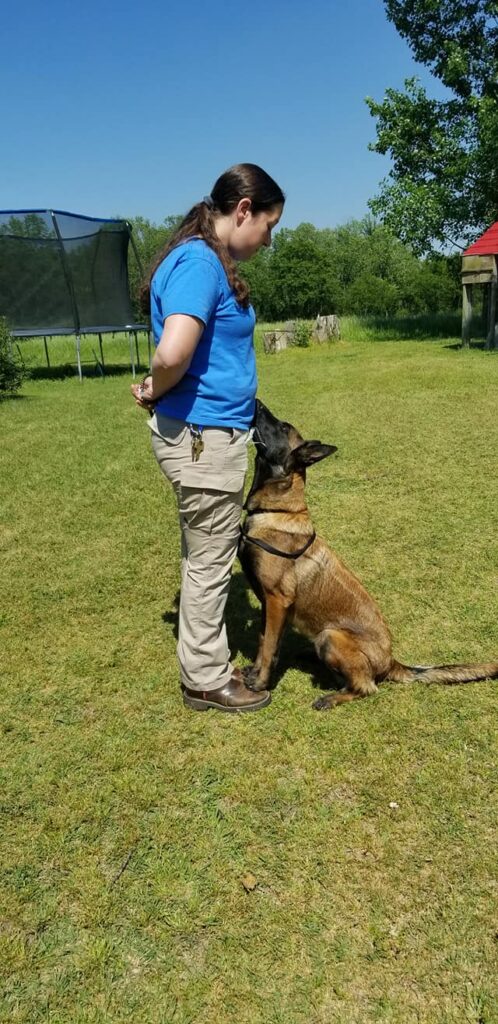
Are they trained to perform any special tasks?
For Nadia, other than basic obedience (because she had none when I got her), she does many tricks. Bang (play dead); over roll (both directions); spin; twist; sit pretty; on twos; feet up; leg weaves; figure 8 through the legs; bow; crawl; hold; paw; boing [jump in the air]; and high five.
I have taken her dock diving and started her in agility and directionals. She knows touch, retrieval (for wheelchair), and we are working on light switch. I have started taking her to a PSA club. I am going to start trailing with her, but have not started it yet.
Molly actually learned a lot of tasks from Highland Canine (light switch, deep pressure therapy, mobility, touch) along with the starting process of directionals, trailing, agility and rally obedience. Since then I still keep her up on the tasks she learned from Highland.
I have also taught her retrieval (for wheelchair) and some tricks (sit pretty; roll over both directions; crawl; bang [playing dead] spins; twists; paw [shake]; high five legs weaves; figure 8 between your legs; bow).
Molly also got her BH in IGP on December 14, 2019. I am hoping to get her
therapy certified, as soon as the Covid situation recedes and I can get her back out in the world.
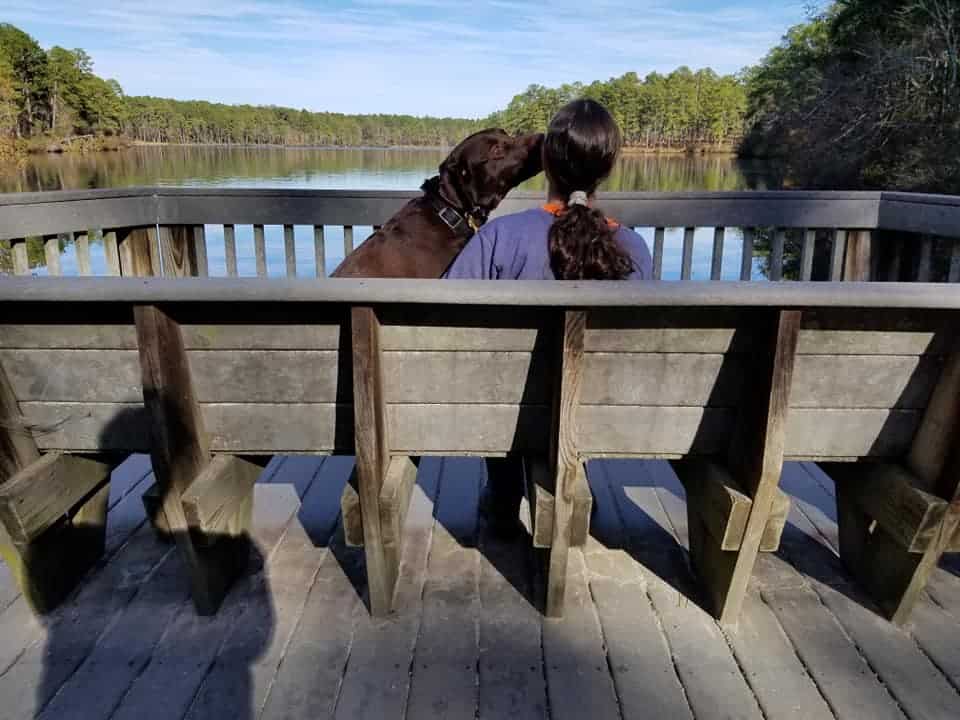
—
With sincere thanks to Andrea Portbury, Clara Diekman and Savanna Raymond for sharing their stories for this article.


You must be logged in to post a comment.